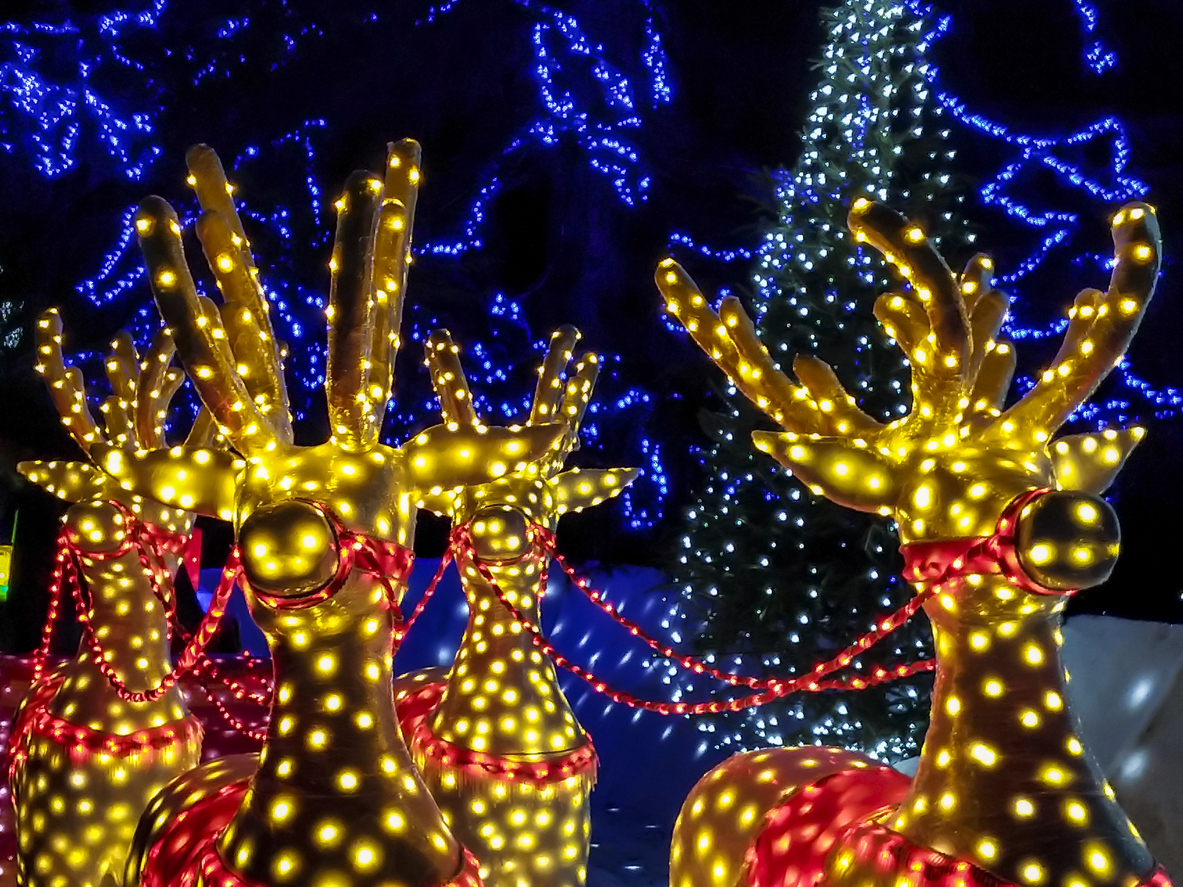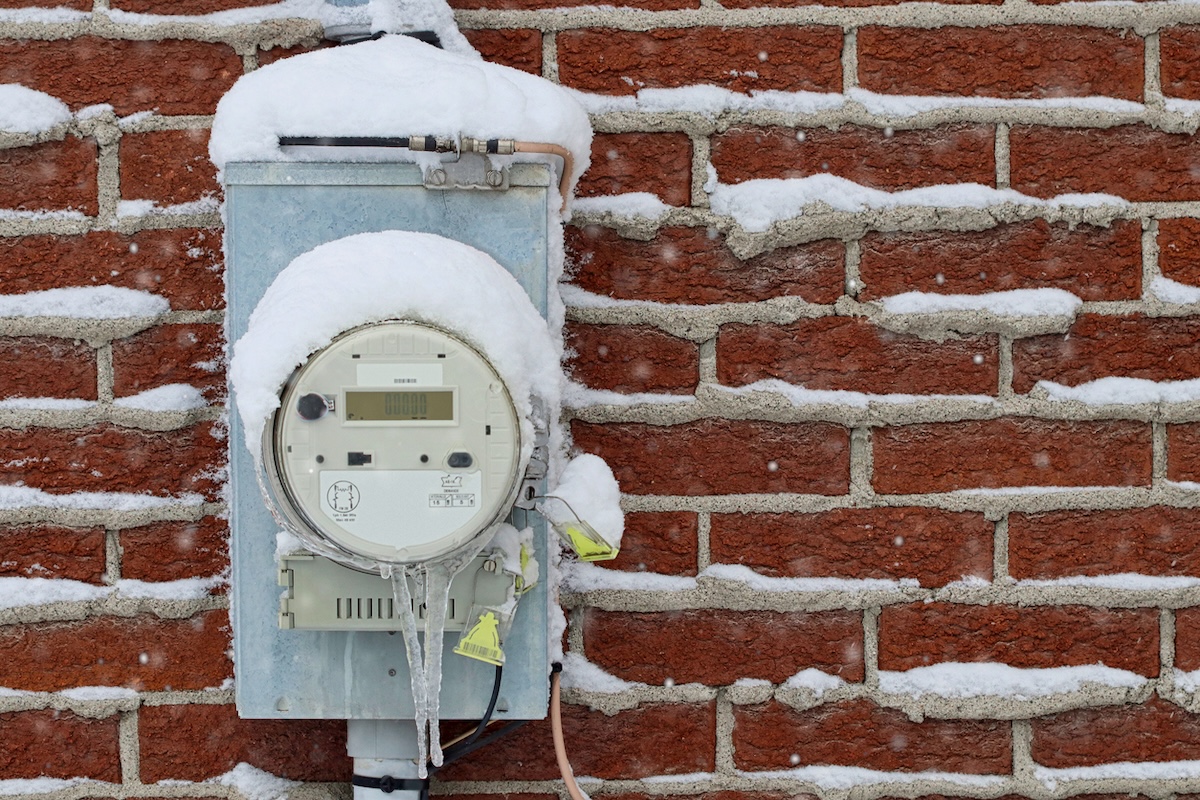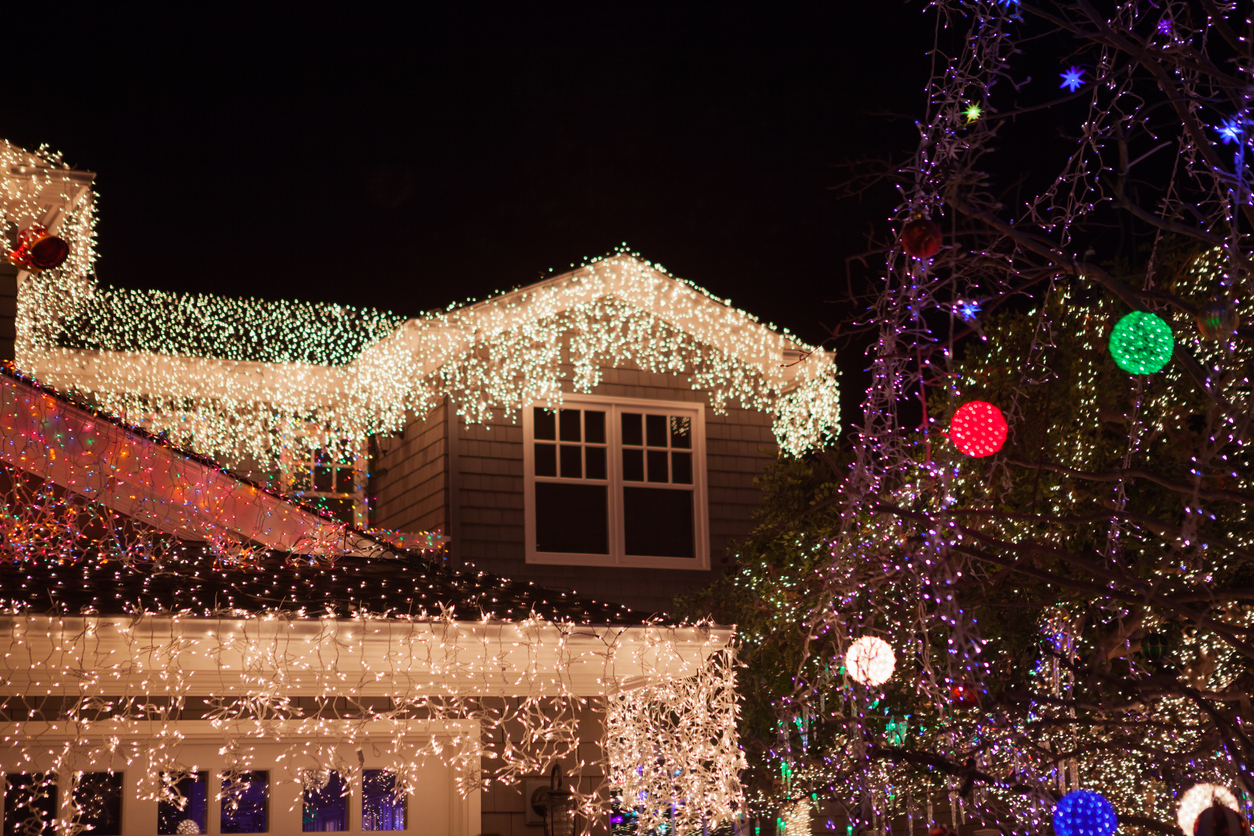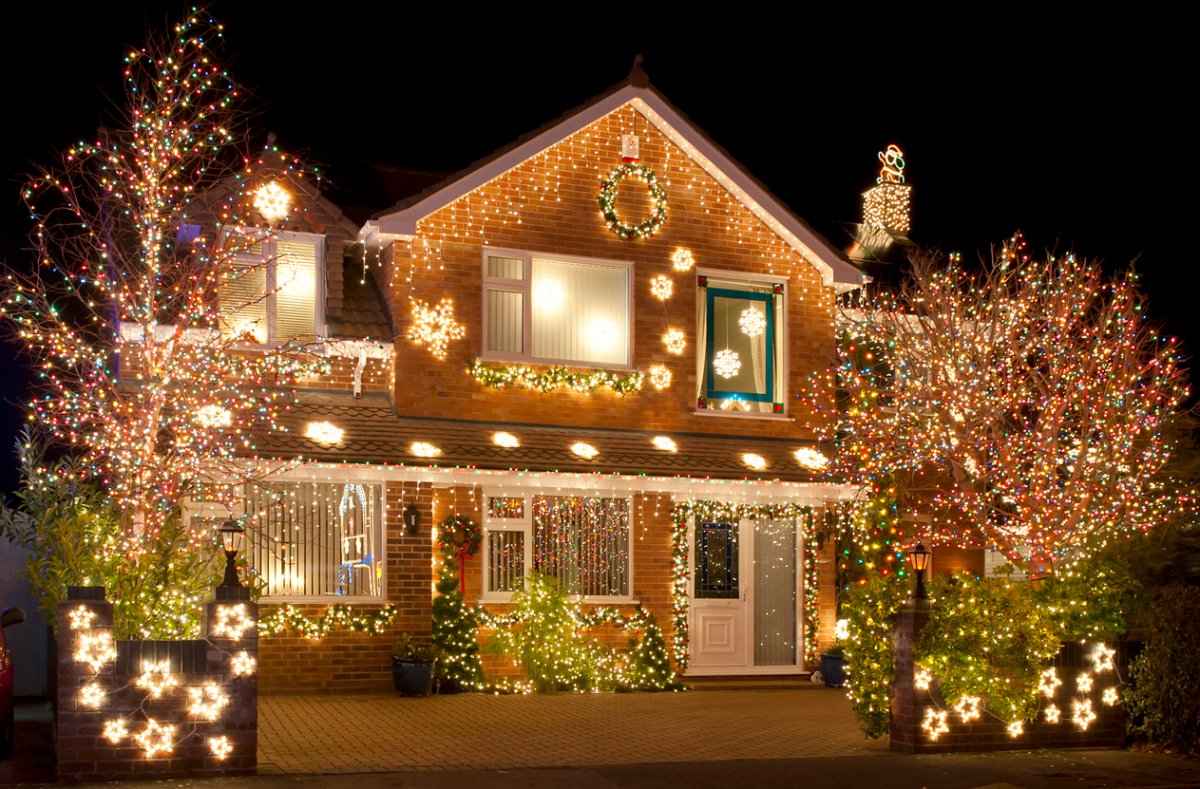We may earn revenue from the products available on this page and participate in affiliate programs. Learn More ›
Q: Our neighborhood is doing a holiday light decorating contest this year. My husband thinks we can win by adding even more lights to our already decked-out house. I’m worried that this is going to increase our utility bill by too much. Do Christmas lights use a lot of electricity?
A: You are not alone in keeping finances in mind when thinking about decorating this holiday season. Between the cost of having Christmas lights professionally installed and their electricity usage, the budget can go up quickly.
Unfortunately, there isn’t a simple answer to the question: “Do Christmas lights use a lot of electricity?” The cost can vary depending on a range of factors, including the types of Christmas lights you’re talking about (such as indoor or outdoor Christmas lights), the bulb type, how early in the season you put your decorations up, and how long you leave them running each day. We’ll explore each of these variables in the next few sections to help you gauge what you can expect the cost of decorating your home to reach.
RELATED: How to Put Lights on a Christmas Tree the Right Way

The type of bulb is a big factor.
Not all Christmas lights use the same type of bulb. So, when you’re trying to answer the question of how much electricity do Christmas lights use, you must first determine which type you’ll be hanging. According to Joel Worthington, president of Mr. Electric, a Neighborly company, “The type of bulbs used plays a significant role, with traditional incandescent bulbs generally consuming more energy compared to energy-efficient LED bulbs.”
The U.S. Department of Energy also recommends choosing LED lights over their incandescent counterparts. The agency says that powering LED Christmas tree lights could cost as little as $0.27, assuming you light your tree for about 12 hours each day for 40 days. That figure is significantly lower than the approximate $10 it would cost to run incandescent bulbs for similar indoor lights. The reason for this substantial difference has to do with the fact that LED Christmas lights’ wattage is much lower than that of incandescent bulbs.
LEDs do more than just offer a lower Christmas light wattage. They are brighter and provide a higher quality light than incandescent options. The bulbs also won’t burn out as quickly, saving the hassle of worrying about how to fix a strand of Christmas lights that won’t light up. As you start shopping, you’ll also find that there are a wide variety of LED bulb types available—such as mini lights, wide-angle bulbs, and larger C6 and C9 options—to help bring your design vision to reality.
RELATED: 5 Things to Know Before Buying a Holiday Inflatable
How many strands are plugged in can affect electricity use.
“While there isn’t a strict numerical limit on the number of Christmas light strands one can use, it’s advisable to be mindful of the cumulative energy consumption,” says Worthington. He explains, “The more strands you add, the higher the overall power usage.”
Depending on your budget and design vision, you might need to make some compromises to ensure that you’re satisfied with your house Christmas lights, but not completely shocked by the utility bill.
It also depends on how long you leave them on.
Worthington also explains that “The duration for which the lights are left on daily contributes to the electricity usage—longer durations result in higher consumption.” Turning the lights off before you go to bed and only turning them on at dusk can limit the energy pull.

Exactly how much electricity do Christmas lights use?
Because there are so many variables that can affect the amount of electricity Christmas lights use, it takes a simple calculation to get a much better idea of what the resulting electricity costs will be.
To calculate the cost, start by determining the wattage of each light strand (it should be on a label on the strand or somewhere on the packaging). Then, multiply this value by the number of hours you plan to leave your lights on for each day. This will provide the total number of watt-hours the bulbs will use each day. Then divide this number by 1,000 to determine the number of kilowatt-hours. Multiplying this by your utility company’s cost per kilowatt-hour should give you a daily total.
Here’s an example to calculate the energy costs to run an 80-watt strand of LED Christmas lights for 6 hours. You could multiply these figures by the total number of strands you plan on using and the number of days for which you plan to leave your decorations up.
- 80 watts x 6 hours = 480 watt-hours
- 480 watt-hours/1,000 = 0.48 kilowatt-hours
- 0.48 kilowatt-hours x 0.20 per kilowatt-hour = 0.096
- This means that it would cost about 10 cents to run each 80-watt strand for 6 hours.
The table below estimates the cost of running a 100-bulb strand of each different light type for 6 hours. The prelit tree includes the wattage and cost of six strands in total.
| Bulb Type | Wattage | Cost |
| Incandescent Mini | 40 watts | $0.05 |
| LED Mini | 5 watts | $0.006 |
| Incandescent C9 | 700 watts | $0.84 |
| LED C9 | 80 watts | $0.10 |
| LED Prelit Christmas Tree | 30 watts | $0.04 |
| LED Projector | 4 watts | $0.005 |
You can save electricity and money with these 4 tips.

As Worthington explains, “Thoughtful planning, including using fewer strands and selecting efficient technologies, allows for festive and dazzling displays while keeping energy consumption to a minimum.” Some tips to help you enjoy the vibrant holiday display that you envision without breaking the bank include:
- Choose LED bulbs over incandescent ones. As mentioned above, LED power consumption is significantly lower than incandescent lights, delivering measurable savings on utility bills.
- Use a timer. Connecting your lights to a timer—like this highly rated 24-hour outdoor timer available at Amazon—can keep costs to a minimum by powering the lights only during the hours you want them on. You also won’t need to be home to turn on your display or remember to turn them off before heading to bed.
- Try smart lights. Smart Christmas lights—such as these Brizled Smart Coloring Changing String Lights—allow you to control a display from your phone or even your virtual assistant. You can set schedules, ensuring that lights aren’t left on accidentally for longer than intended.
- Consider solar-powered or battery-operated Christmas lights. Worthington explains that “choosing solar-powered or battery-operated lights for certain displays eliminates the need for electricity altogether.” A variety of solar-powered Christmas lights, like this highly rated option available at Amazon, are on the market, as well as battery-operated products, such as these snowflake string lights.
RELATED: Don’t Throw Your Old Christmas Lights in the Trash—Do This Instead


